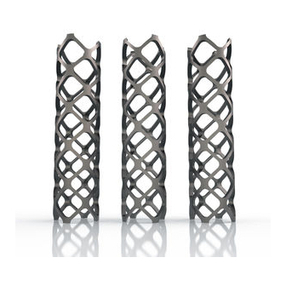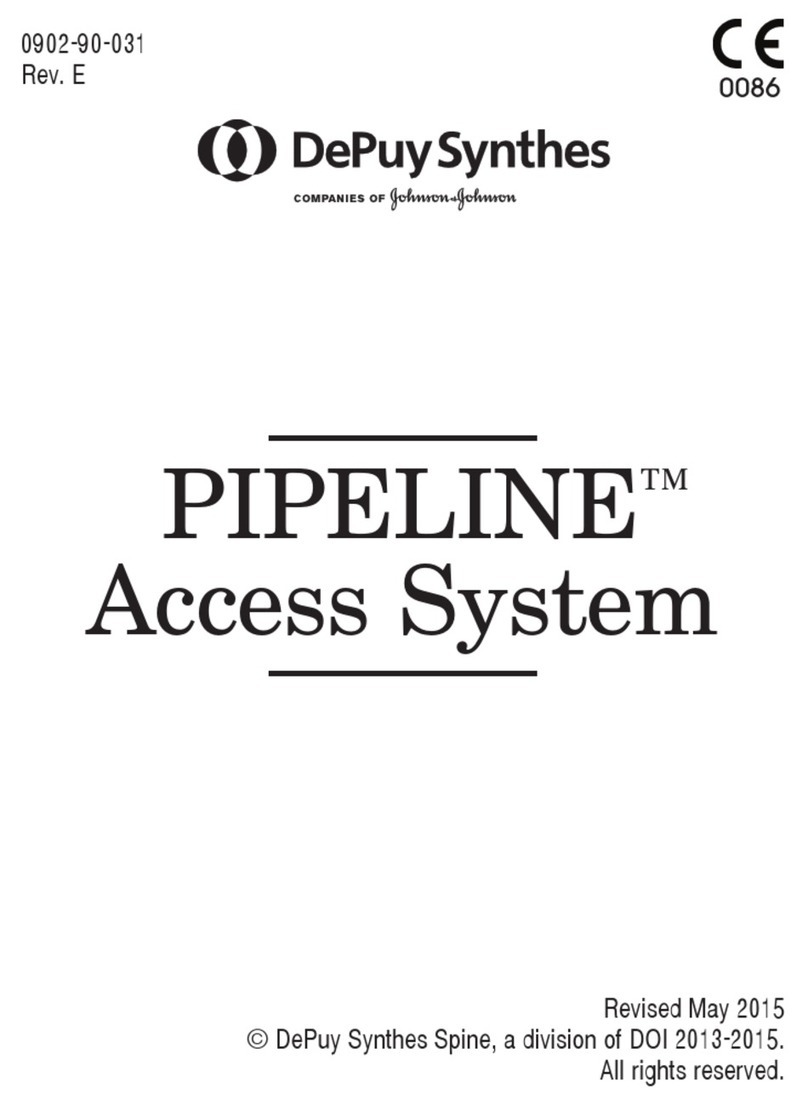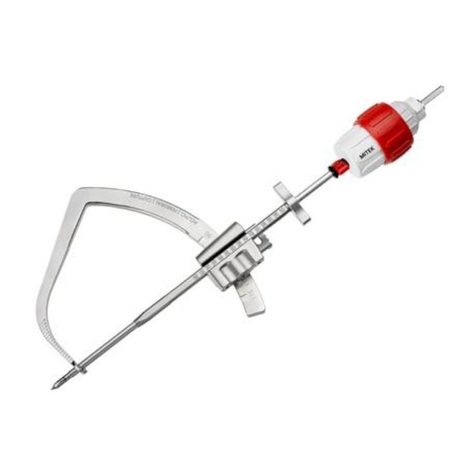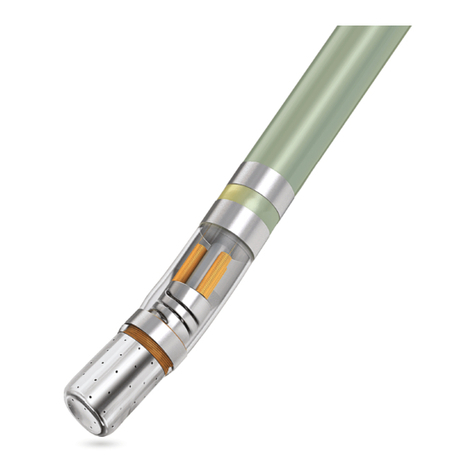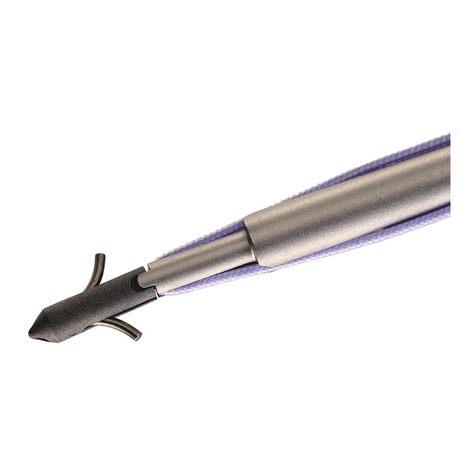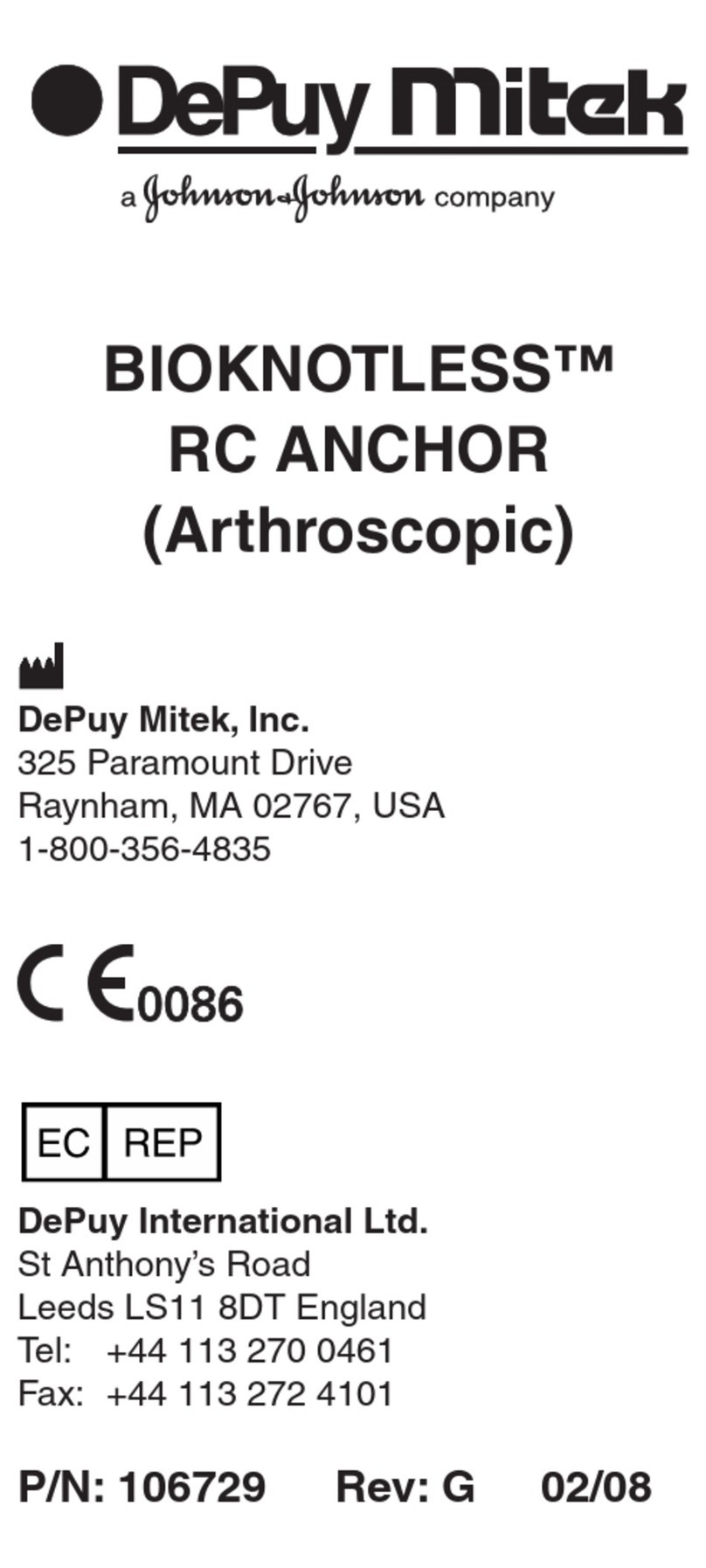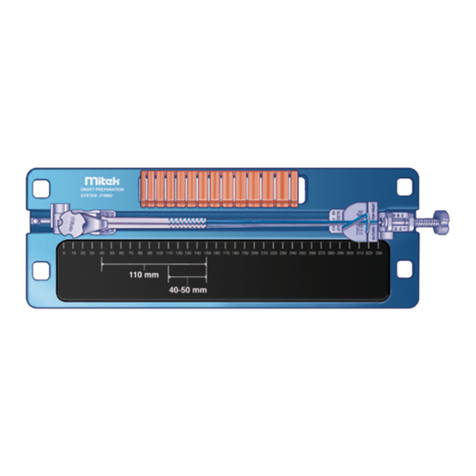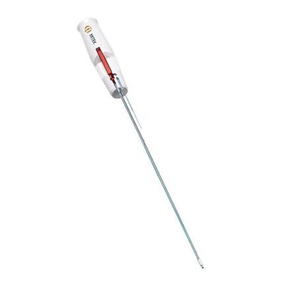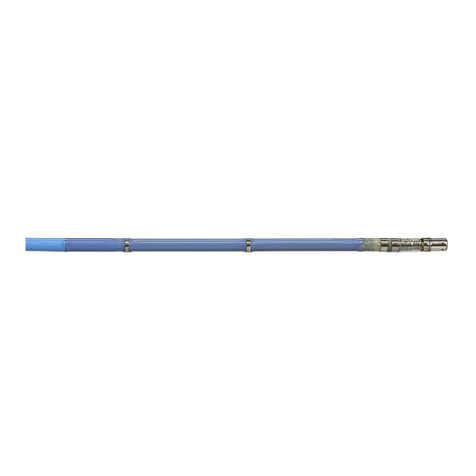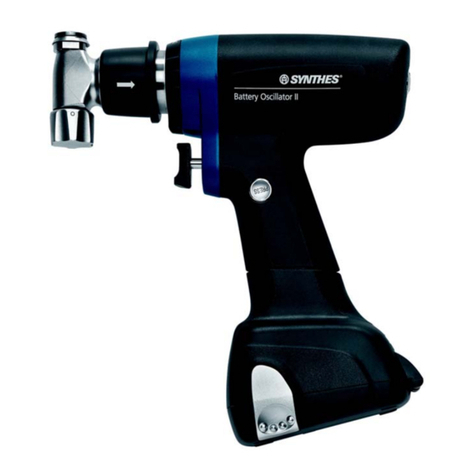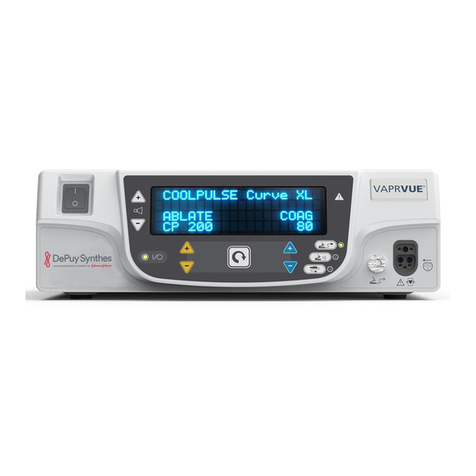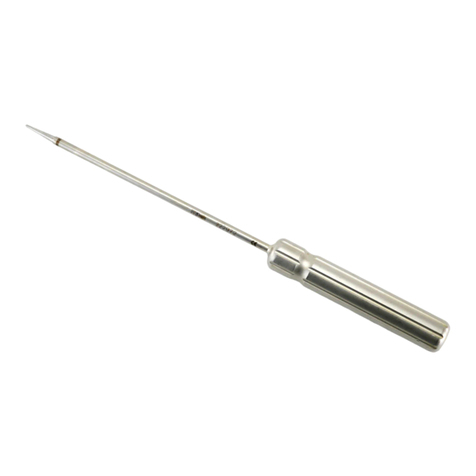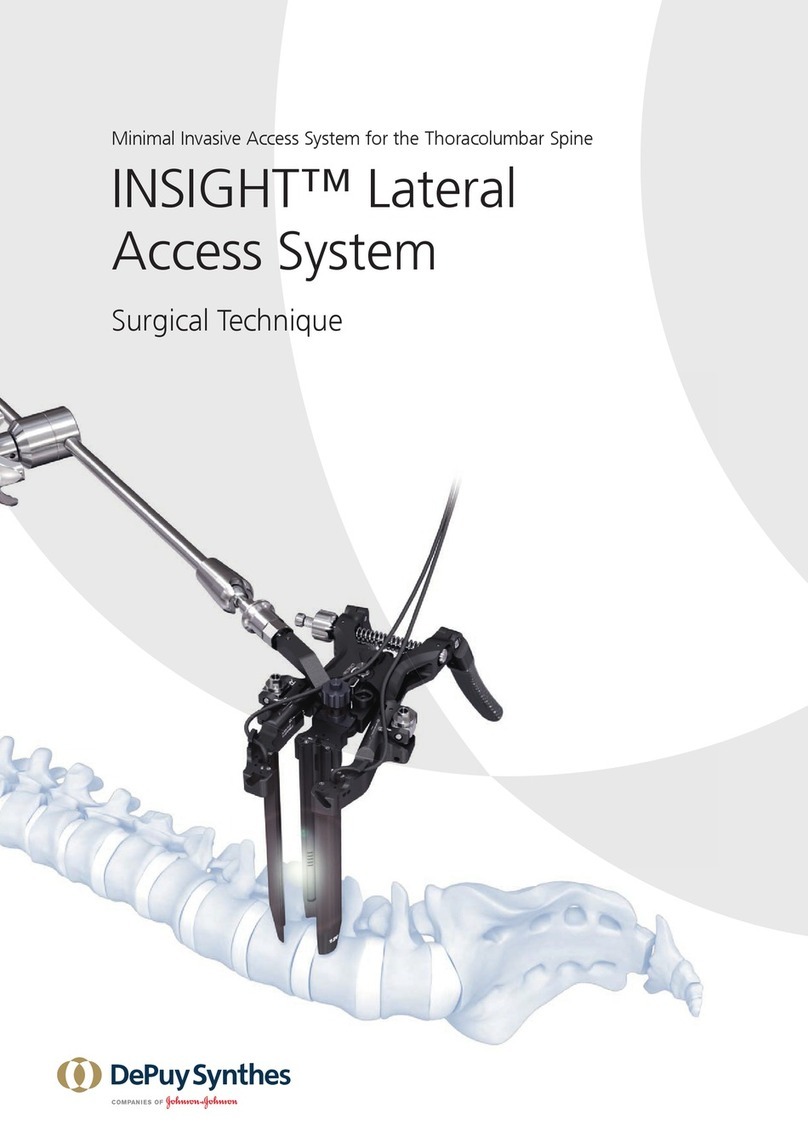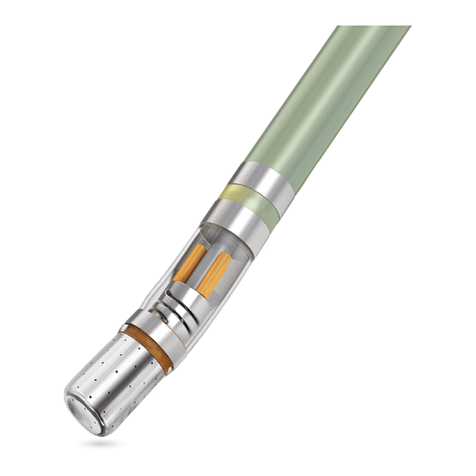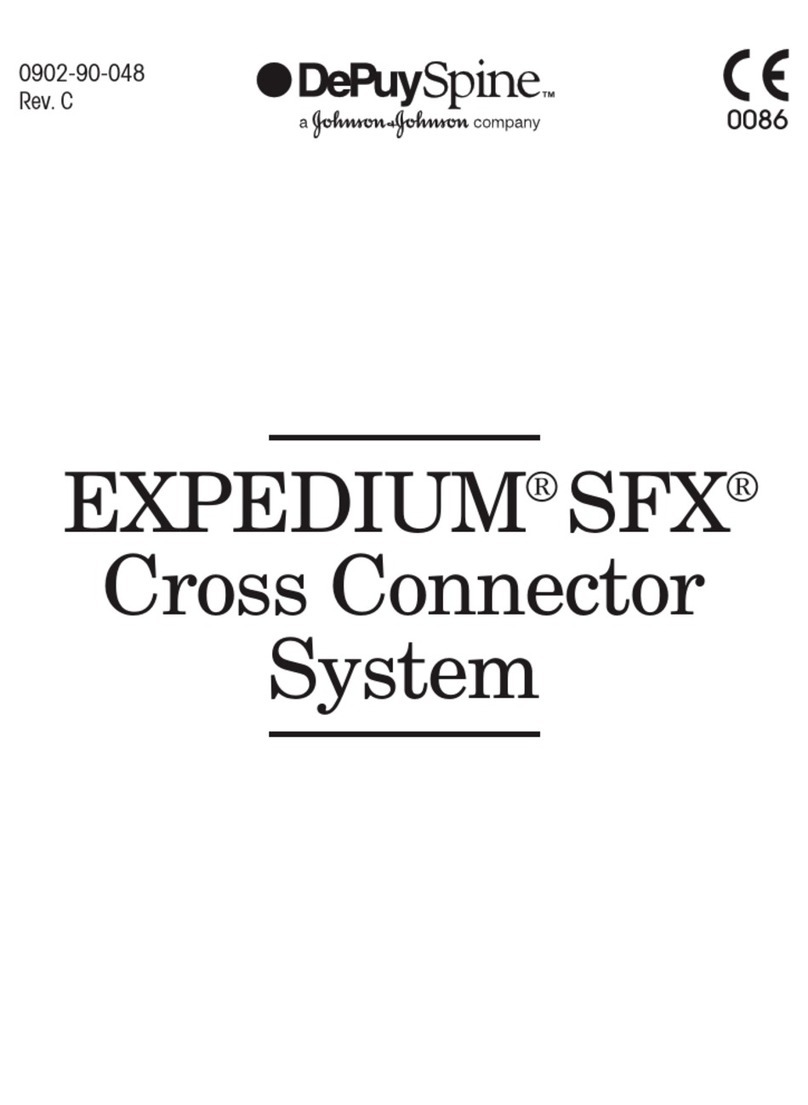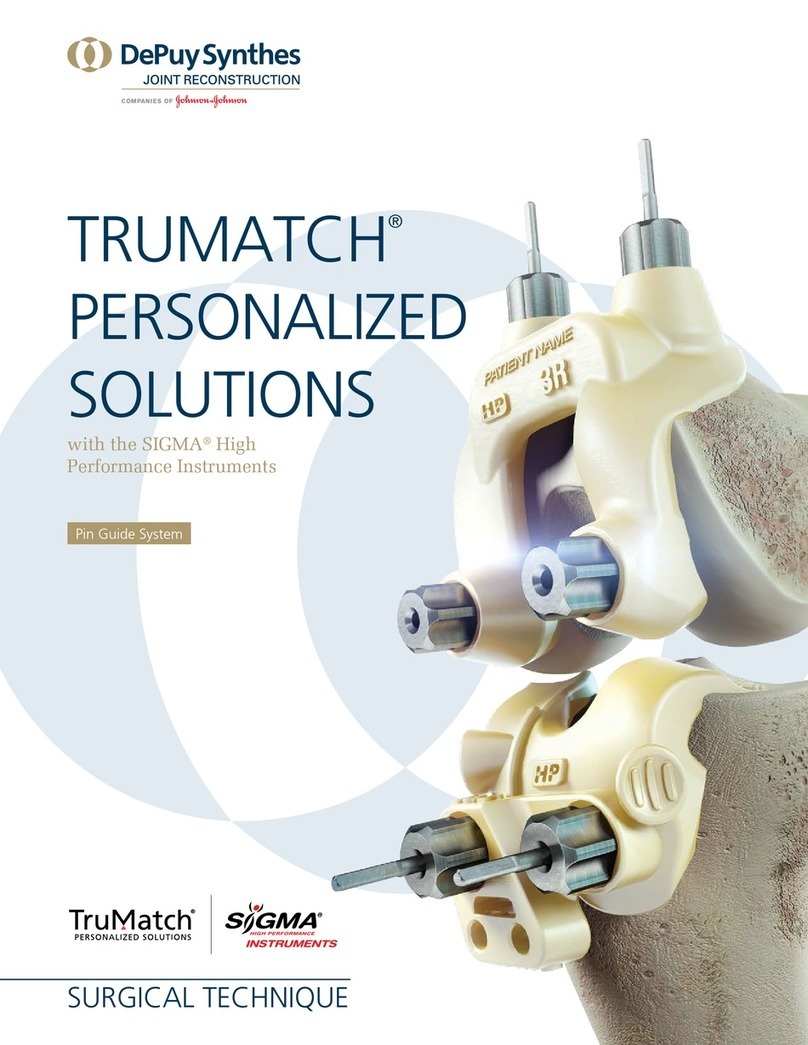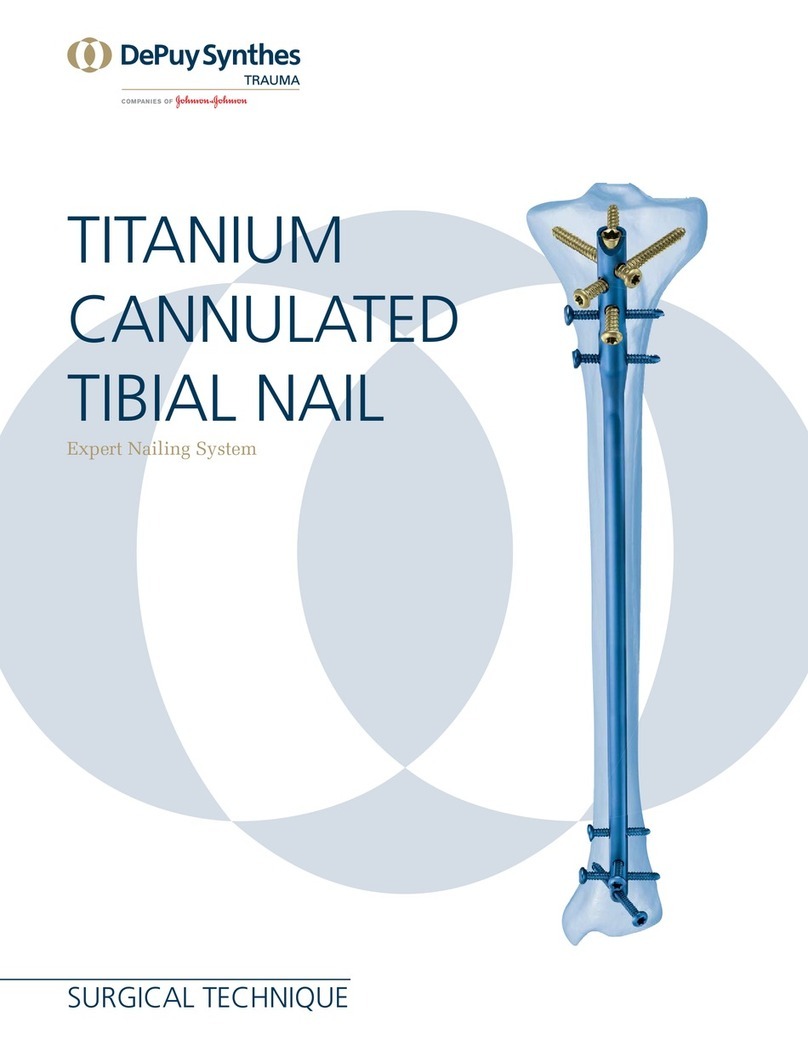
English
M-5276-686A 5
2. It is important to carefully follow the power titration procedure as specified in
the instructions for use. Too rapid an increase in power during ablation may
lead to perforation caused by steam pop.
3. This catheter may damage the prosthetic tricuspid valve of a patient if the
catheter is accidentally advanced through the valve.
4. The patient who has had a prior atrial flutter ablation procedure may be at
greater risk for perforation and/or pericardial effusion with the use of this
catheter system.
5. In accordance with your hospital’s protocol, monitor the patient’s fluid
balance throughout the procedure to avoid fluid volume overload. Some
patients may have factors that reduce their ability to handle the volume
overload, making them susceptible to developing pulmonary edema or heart
failure during or after the procedure. Patients with congestive heart failure or
renal insufficiency, and the elderly are particularly susceptible. Prior to the
procedure, always identify the patient's risk of volume overload.
6. The safety of discontinuing anticoagulation therapy following catheter
ablation of atrial fibrillation has not been established; anticoagulation
therapy in such patients should be administered in accordance with the
ACC/AHA/ESC 2006 Guidelines for the Management of Patients with Atrial
Fibrillation (Fuster V, Ryden LE, Cannom DS et al. ACC/AHA/ESC 2006
Guidelines for the management of patients with atrial fibrillation. Circulation
2006: 114:257-354).
7. The safety and effectiveness of radiofrequency ablation for the treatment of
atrial fibrillation in patients with significant left ventricular dysfunction,
advanced heart failure, substantial left atrial enlargement, and structural
heart disease have not been established.
8. The catheter has not been shown to be safe at electrode temperatures
above 40 °C.
9. Implantable pacemakers and implantable cardioverter/defibrillator (ICDs)
may be adversely affected by RF current. It is important to have temporary
external sources of pacing and defibrillation available during ablation and to
temporarily reprogram the pacing system to minimum output or OFF mode
to minimize the risk of inappropriate pacing. Exercise extreme caution during
ablation when in close proximity to atrial or ventricular permanent leads;
program the ICD to the OFF mode during the ablation procedure; and,
perform complete implantable device analysis on all patients after ablation.
10. Patients undergoing septal accessory pathway ablation are at risk for
complete AV block which requires the implantation of a permanent
pacemaker. Patients who experience inadvertent complete AV block as a
result of RF ablation may also require permanent pacing.
11. During the trans-aortic approach, adequate fluoroscopic visualization is
necessary to avoid placement of the catheter in the coronary vasculature.
Intracoronary placement of the ablation catheter, RF energy application, or
both have been associated with myocardial infarction.
12. If phrenic nerve location is a concern, precautionary measures are
recommended to evaluate the proximity of the nerve to the ablation
electrode, such as pacing maneuvers.
13. To minimize risk of atrio-esophageal fistula, precautionary measures should
be taken when ablating on the posterior wall of the left atrium in proximity to
the esophagus.
14. Minimize X-ray exposure during the procedure. Catheter ablation
procedures present the potential for significant X-ray exposure, which can
result in acute radiation injury as well as increased risk for somatic and
genetic effects, to both patients and laboratory staff due to the X-ray beam
intensity and duration of the fluoroscopic imaging. Catheter ablation should
only be performed after adequate attention has been given to the potential
radiation exposure associated with the procedure, and steps have been
taken to minimize this exposure. Careful consideration must therefore be
given for the use of the device in pregnant women.
15. Do not expose catheter to organic solvents such as alcohol.
16. Do not autoclave the catheter.
17. Do not immerse proximal handle or cable connector in fluids; electrical
performance could be affected.
18. Do not scrub or twist the distal tip electrode during cleaning.
19. Inspect irrigation saline for air bubbles prior to its use in the procedure. Air
bubbles in the irrigation saline may cause emboli.
20. Purge catheter and irrigation tubing with heparinized normal saline.
21. Electrophysiology catheters and systems are intended for use only in X-ray
shielded rooms due to electromagnetic compatibility requirements and other
hospital safety guidelines.
22. Do not attempt to operate the Biosense Webster THERMOCOOL®SF NAV
Diagnostic/Ablation Deflectable Tip Catheter or the RF generator prior to
completely reading and understanding the applicable instructions for use.
23. Cardiac ablation procedures should be performed by appropriately trained
personnel in a fully equipped electrophysiology laboratory. Appropriate
clinical instruction in the use of the THERMOCOOL®Irrigated Catheters
should also be completed.
24. The long-term risks of protracted fluoroscopy and creation of RF induced
lesions have not been established. Careful consideration must therefore be
given for the use of the device in prepubescent children. Furthermore, the
risk/benefit in asymptomatic patients has not been studied.
25. To avoid thromboemboli, intravenous heparin should be used when entering
the left heart during ablation, and many physicians prescribe aspirin, less
often warfarin, for about 3 months afterward. No consensus yet exists about
the need for short-term anticoagulation after ablation.
26. When using the Biosense Webster THERMOCOOL®SF NAV
Diagnostic/Ablation Deflectable Tip Catheter with conventional systems
(using fluoroscopy to determine catheter tip location), or with the CARTO®EP
Navigation System, careful catheter manipulation must be performed in
order to avoid cardiac damage, perforation, or tamponade. Catheter
advancement should be done under fluoroscopic guidance. Do not use
excessive force to advance or withdraw the catheter when resistance is
encountered. The firmness of the braided tip dictates that care must be
taken to prevent perforation of the heart.
27. Always pull the thumbknob back to straighten the catheter tip before
insertion or withdrawal of the catheter.
28. Always maintain a constant heparinized normal saline infusion to prevent
coagulation within the lumen of the catheter. Do not use this catheter without
irrigation flow.
29. When RF current is interrupted for either a temperature or an impedance
rise (the set limit is exceeded), the catheter should be removed, and the tip
cleaned of coagulum, if present. When cleaning the tip electrode, be careful
not to twist the tip electrode with respect to the catheter shaft; twisting may
damage the tip electrode bond and loosen the tip electrode. Make sure the
irrigation holes are not plugged prior to re-insertion.
30. Apparent low power output, high impedance reading, or failure of the
equipment to function correctly at normal settings may indicate faulty
application of the indifferent electrode(s) or failure of an electrical lead. Do
not increase power before checking for obvious defects or misapplication of
the indifferent electrode or other electrical leads.
31. The Biosense Webster THERMOCOOL®SF NAV Diagnostic/Ablation
Deflectable Tip Catheter is intended for use with a compatible RF generator,
a compatible irrigation pump, CARTO®EP Navigation System and
Biosense Webster cables, and other appropriate interface cables and
connectors. Use of a compatible irrigation pump is recommended to assure
proper irrigation flow rate.
32. The Biosense Webster THERMOCOOL®SF NAV Diagnostic/Ablation
Deflectable Tip Catheter has been shown to create larger lesions than
standard RF ablation catheters. Care should be taken when ablating near
structures such as the sino-atrial and atrioventricular nodes.
33. The sterile packaging and catheter should be inspected prior to use. Do not
use if the packaging or catheter appears damaged.
WARNING: This is a controlled proprietary and confidential document. Verify revision is current prior to use.
AVISO: Este es un documento controlado, confidencial, y con derechos reservados. Revisar si es la revision mas actualizada.
